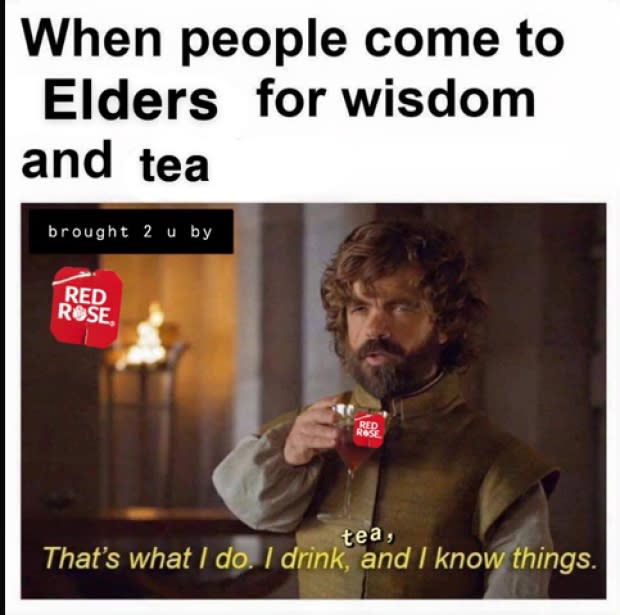Edmonton Indigenous artist part of Canada's 'meme explosion'
Nigel Henri Robinson needs only his cellphone and 10 minutes to get his point across.
When inspiration hits, Robinson whips out his phone and begins pasting quotes and jokes on viral images.
In short, he makes memes.
The Edmonton-based Dene man from Cold Lake First Nations is part of a growing movement of Indigenous meme makers across the country.
On a weekly basis, Robinson designs memes that celebrate Indigenous cultures and inform his readers about Canadian history.
"There's been a meme explosion recently; there are so many new Indigenous 'meme-ers,'" Robinson said.

The collective is growing so fast, Indigenous meme creators kick-started a WhatsApp group chat connecting the community.
Robinson participates in the group chat alongside Arnell Tailfeathers, who lives in southern Alberta on Treaty 7 territory, and eight other artists.
"Sometimes, we make posts with other members you should follow, so you can follow any of us and you'll learn about how huge our community is becoming," Robinson said.
There's a reason for that, he said.
"These memes can be a real statement on — and a reflection of — Canadian politics, and how they have influenced Indigenous people," Robinson said.
Break down complex ideas
Robinson started making memes in July 2018 because they offer an "accessible avenue" for him to create art and "get out a statement I care about." He already has more than 1,000 followers on Instagram.
According to Robinson, memes can break down complex ideas and, using humour and puns, unmask stereotypes and racism. In an Indigenous context, memes bare Canada's colonial history, he said.
"We make them accessible and digestible for fellow Indigenous people and non-Indigenous people alike," Robinson said.
Memes are effective because the platform is "deeply embedded in people's lives," said University of Alberta sociology professor Sourayan Mookerjea, who studies media.
Memes are at everyone's fingertips, Mookerjea said. Logging on to Twitter or Instagram unlocks numerous meme accounts.
"They do circulate to a certain extent through emails, websites, discussion boards and so on," he said.
Memes can help in the fight against the rising level of racism and other forms of prejudice, he said.
"As much as an aspect of Canadian society is trying to learn from our colonial history and learn what needs to be reconciled, there is a lot of backlash," Mookerjea said. "This kind of meme work is really important to combat that."
Memes can cause harm too, he said.

"They're effective for decolonization and anti-racism, but also effective for the other side," Mookerjea said. "A lot of memes are sexist and racist."
Commenters on Robinson's posts have suggested Indigenous people need to "get off the rez and go and make something of themselves somewhere in the city," Robinson said, but he doesn't let that discourage him.
"Meme writers are accessible to bigoted ideas that just aren't true," Robinson said. "We use [memes] to address real issues in our communities, so that's when we get really polarizing responses to the memes."
When asked about his favorite meme-ers, Robinson is quick to list Tailfeathers and the Decolonial Meme Queens, a group based in British Columbia on Cold Lake First Nations.
The Decolonial Meme Queens have over 30,000 Instagram followers.
"[Memes] are one of the most accessible forms of art that can be created," Robinson said. "They're a real accessible and easy way to participate in decolonization."

